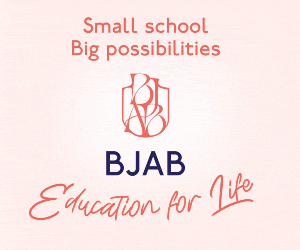Matthew Cossolotto explains ‘The Wizard of Oz Formula’ for powerful presentations.
All speech writers and speakers – not to mention comedians – know about the Rule of Three. Yes, it’s a rule, but in practice it works more like magic. Think of it as the Magic of Three.
To illustrate. We’re all familiar with this famous quote from Shakespeare’s Julius Caesar when Mark Antony addresses the crowd after Caesar’s assassination: “Friends, Romans, countrymen,” he intones, “lend me your ears.”
The cadence or rhythm of three feels normal and natural to us: The Holy Trinity (Father, Son and Holy Ghost). The Three Wise Men. The Three Musketeers. Abraham Lincoln’s “government of, by and for the people”. We see it in fairy tales and nursery rhymes – Three Blind Mice, Goldilocks and the Three Bears, Three Little Pigs. You get the idea.
Jokes often begin with a situation involving three people, such as three guys walk into a bar. Let’s say a president (insert name), a prime minister (insert name), and the Pope (insert name). Or this unlikely threesome could be on a plane or a boat. The situation often seems implausible.
We recognize it immediately as a set-up for a punchline.
Here’s an example of a rule-of-three joke I’ve always liked best: A priest, a rabbit and a monk walk into a bar. The rabbit says: “I think I’m a typo.” (Hint: remove the letter ‘t’ in ‘rabbit’.) When it comes to jokes or fairy tales about little pigs and/or blind mice, two feels like too few and four seems like too many. Two is fine in a relationship and four wheels work well on a car, but in speeches and stories there’s something magic about the rule of three.
The appreciation of threes goes way back in time. Aristotle’s Ars Rhetorica also employs the rule of three. He discusses the three main methods of persuasion that every speaker should employ: Ethos, Pathos and Logos. Briefly, Ethos deals with the speaker’s personal character and credibility. Pathos appeals to emotion or the psychology of the audience. And Logos is based on reasoning or logic to make the case.
Far be it for me to quibble with Aristotle, or to try to improve on his rules of persuasion that have stood the test of time since the 4th century BC. But I would like to humbly propose a slight variation. Something I call ‘The Wizard of Oz Formula’. As you’ll see, this formula is also grounded in the all-important rule of three. And in some ways, these three elements loosely mirror Aristotle’s Ethos, Pathos and Logos.
Picture the Scarecrow, the Tin Man, and the Cowardly Lion. I’m sure we all remember those lovable, colourful characters from the motion picture The Wizard of Oz. The Scarecrow was searching for a brain, the Tin Man a heart, the Cowardly Lion courage. A là Aristotle, I suggest that every successful speech will contain those three elements: Brains (similar to Logos: information, data, logic, reasoning); Heart (akin to Pathos: passion, emotion, enthusiasm); and Courage (aligned with Ethos: character, a sense of purpose, a speaker who demonstrates courage also embodies character and credibility).
In many speaking situations, it’s a good idea to issue a call to action, to ask members of the audience to do something and not simply to take in the information. A key message
from The Wizard of Oz is that the qualities being sought by all three characters are already present inside each one. As the story unfolds, the Scarecrow learns he is already pretty smart. The Tin Man has demonstrated that he, indeed, has a heart. And even the Cowardly Lion displays unexpected courage in the face of adversity. But all three believe or imagine that the Wizard has special powers to somehow bestow these soughtafter qualities on each of them.







